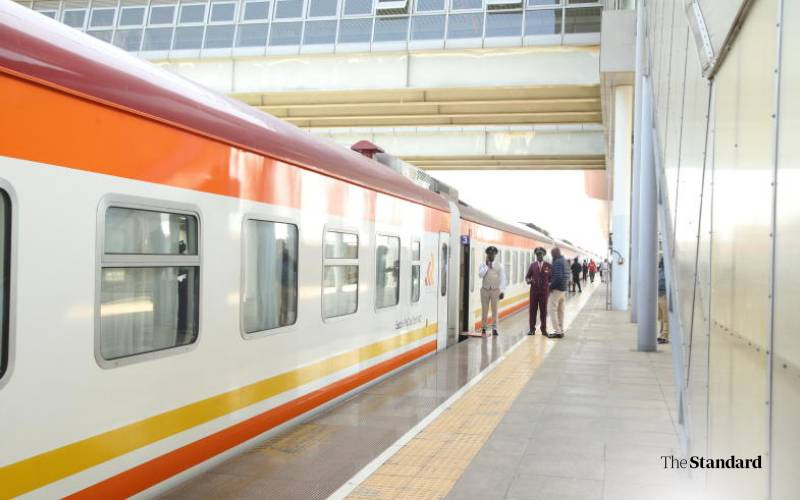Fare hikes see commuters shun SGR

[Elvis Ogina, Standard]
Fewer people commuted using the Standard Gauge Railway (SGR) and the commuter rail in 2024.
This resulted from fare hikes and commuter line disruptions, impacting revenues.
In the same period, the SGR raised passenger revenues amounting to Sh4 billion in 2024, marking a 39.4 per cent increase from the previous year.
The passenger revenue increase was a result of a 50 per cent fare hike implemented in January 2024.
This however, is in contrast with the number of passengers transported through the SGR in 2024. The number of passengers declined 10.3 per cent, to 2 million in 2024 - this is according to data from the Kenyan National Bureau of Statistics, economic survey 2025.
The freight volume transported through the SGR declined from 6,533 thousand tonnes in 2023, to 6,531 thousand in 2024. This decline led to a 4.8 per cent decrease in revenue from Sh14.6 billion in 2023 to Sh13.9 billion in 2024.
The value of output for the transportation and storage sector rose from Sh3.27 trillion to Sh3.5 trillion in 2024. Road transport generated the highest output value in the review period.
The government disbursed a total Sh80 billion towards road maintenance in the fiscal year 2023-2024, marking a 20 per cent growth from the previous year - this is according to data from the Kenyan National Bureau of Statistics, economic survey 2025.
The allocation by the Kenya Roads Board comprised Sh78.5 billion from the fuel levy and Sh1.7 billion from the Transit toll.
The total allocation of road maintenance funds is expected to increase to Sh83.3 billion in the financial year 2024/2025.
In the same period, fewer passengers used the commuter rail system for transportation, marking a 26.9 per cent decline to 2.5 million. However, the volume of freight transported through the Metre Gauge Railway increased to 1.03 million tonnes, from 1 million tonnes in 2023.
Revenue generated from the commuter rail in 2024 was Sh1.9 billion, down from Sh2 billion recorded the previous year.
Similarly, revenue earned from passenger transport through the Metre Gauge Railway was Sh162 million in 2024, down from Sh201 million in 2023.
The decline in passengers and revenue was mainly attributed to the damage caused by flash floods on the Uplands-Kijabe-Longonot at the end of April 2024.
Stay informed. Subscribe to our newsletter
“The floods resulted in the disruption of services,” Economic Survey 2025.
“Passenger transport to Limuru was suspended in May and June 2024, while service in Kisumu on the same line was suspended indefinitely.”
In December 2024, passenger transport resumed operations from Syokimau to Suswa SGR station, connecting to Longonot station via the MGR link through Nakuru to Kisumu.
The economic survey has noted that the upgrading of the Metre Gauge Railway infrastructure, and the introduction of premium passenger services on the Standard Gauge Railway, are major improvements to the transportation and storage infrastructure, aimed at enhancing trade, improve connectivity and create jobs and drive economic growth.
In 2024, KRC also launched the SGR premium class service with a coach capacity of 28 passengers each.
SGR employees have been undergoing localisation training since March this year, which will end in June. This is ahead of the full takeover of the SGR operations by the KRC.
Currently, KRC assumes 90 per cent of operations of the SGR line from the Chinese firm, Africa Star Railway Operation Company (Afristar).
The Chinese company started partial handover to Kenya railways as the eight-year operations deal comes to a halt. Despite plans to have the official handover in June this year, the initial plan of operations dictated that the last function of the Chinese firm would run till December 31, 2025.
SGR construction from Nairobi to Mombasa, a 472-kilometer project, began in December 2014 and was completed ahead of schedule, with the line officially opening in 2017.
This goes down in history as Kenya’s most expensive infrastructure project, costing Sh464 billion.












